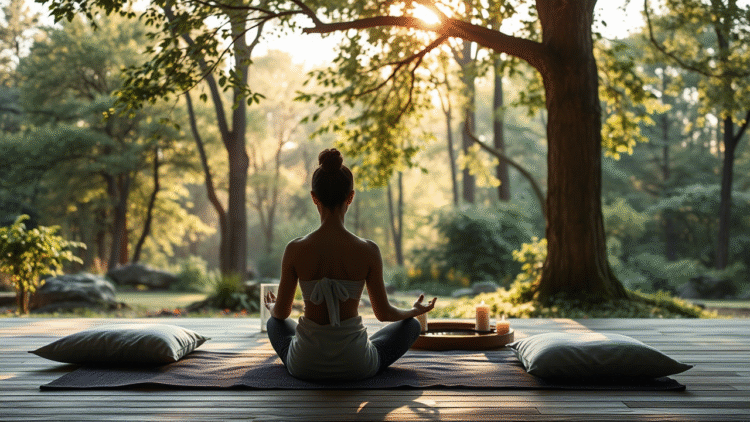HowToForYou.com – Stress has become a near-constant companion for many. Amid the chaos of deadlines, notifications, and never-ending to-do lists, meditation offers a quiet retreat—a way to reset both mind and body. Contrary to common myths, meditation isn’t mystical or religious. It’s a straightforward, science-backed tool to restore clarity, reduce anxiety, and enhance well-being.
This beginner’s guide provides a down-to-earth approach to meditation, debunking misconceptions and offering a structured path to get started no incense, crystals, or prior experience required.
The Real-World Benefits of Meditation
Meditation isn’t about achieving enlightenment or silencing your thoughts entirely. It’s about developing a healthier relationship with your mind. Research has consistently shown that meditation can:
-
Lower stress levels by activating the parasympathetic nervous system
-
Improve sleep quality, reducing the time it takes to fall asleep and increasing deep sleep cycles
-
Enhance focus and productivity by strengthening the brain’s attention control mechanisms
-
Help manage anxiety and low mood through self-regulation and emotional resilience
-
Foster a calmer response to life’s inevitable challenges
The key? Consistency. Just a few minutes a day can gradually reshape how you experience your thoughts and emotions.
7 Steps to Start Meditating Today
1. Carve Out Time That Works for You
You don’t need to commit to an hour-long session on a mountaintop. Even five to 20 minutes is a solid starting point. Morning meditations can set a grounded tone for the day, while evening sessions help release tension before bed.
2. Create a Comfortable Space
No meditation cushion? No problem. A chair, bed, or quiet corner on the floor will do. The important thing is to be upright and supported. Good posture keeps your body alert without being tense.
3. Use Your Senses to Stay Present
Engaging the senses is a powerful way to become anchored in the present. With eyes closed, pay attention to sounds, sensations, or scents around you. This mindfulness technique naturally reduces mental clutter and helps ground your awareness.
4. Focus on the Breath
Begin by silently saying “breathe in” as you inhale, and “breathe out” as you exhale. Don’t worry about controlling your breath—just observe it. This rhythmic focus is the foundation of many meditation practices and creates a soothing internal cadence.
5. Expect the Mind to Wander
Your brain is wired to think, so don’t be surprised if thoughts pop in. The goal isn’t to stop thinking, but to notice when it happens and gently guide your attention back to the breath. Every time you do this, you’re training your mind.
6. Work Through Common Challenges
It’s completely normal to face obstacles like restlessness, intrusive thoughts, or self-judgment. The best approach? Curiosity over criticism. Remind yourself that these moments are part of the learning curve—not a sign you’re doing it “wrong.”
7. Close Gently and Reconnect
Don’t jump back into daily life the moment you finish. Let your eyes remain closed for a couple more minutes. Then, open them slowly and stay seated for a bit. This transition helps preserve the sense of calm you’ve just cultivated.
Want to Go Deeper? Try a Guided Session
For those new to meditation, guided practices can provide helpful structure. Whether it’s a simple audio recording or a video session led by a mindfulness expert, guided meditations can keep you on track and enhance your focus.
Apps like Headspace, Calm, and Insight Timer offer extensive libraries of free meditations for sleep, anxiety, focus, and more. These tools can help build a habit and remove the guesswork as you find your own rhythm.
Final Thoughts: Meditation Is a Skill, Not a Shortcut
The most common misconception about meditation is that you’ll feel calm and clear right away. In reality, the benefits of meditation come with practice—like learning an instrument or a new language. With time, even brief sessions can help reshape how you respond to stress and improve your overall mental clarity.
So if you’ve ever thought “I’m not the meditating type,” think again. Meditation is for everyone—not just yogis, monks, or wellness influencers. It’s simply a method of reconnecting with yourself in a world that constantly pulls your attention outward.
